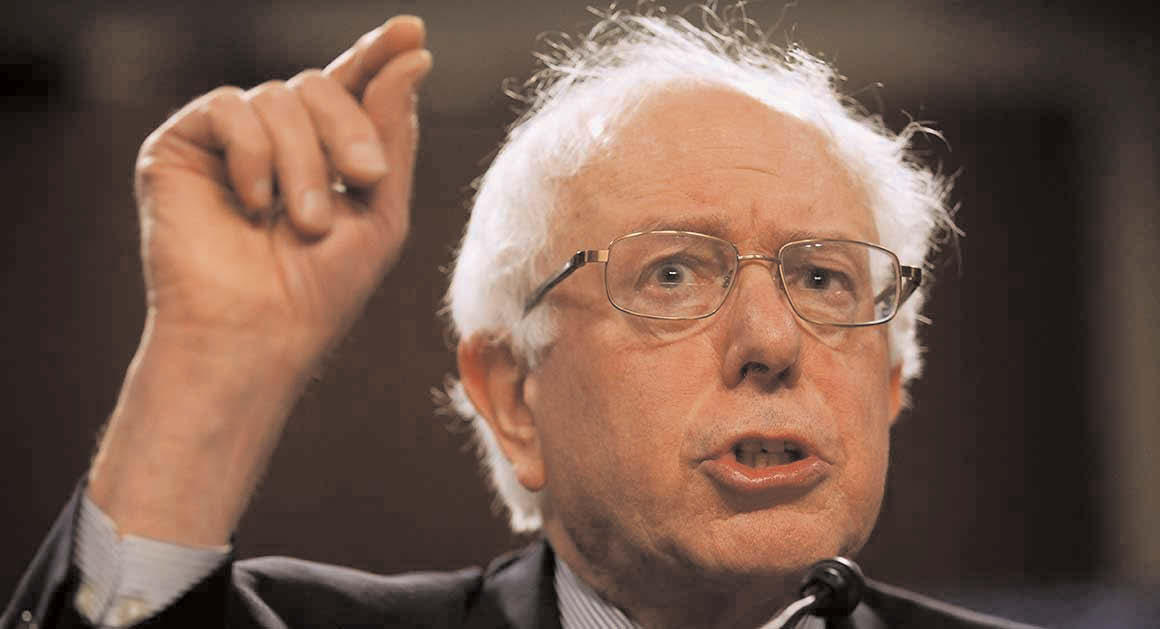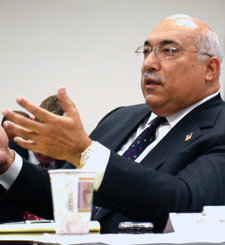
It was 6.45 p.m. and Neal Meyer was not sure how many people would turn up for the Jacobin reading group on a cold, rainy day. As the magazine’s outreach coordinator, he was used to seeing around 60 readers at their monthly session held in the New York City borough of Brooklyn.
But in the next 15 minutes, the ground floor hall of the venue, a neighborhood school, was crammed with at least 50 people. Many of them looked like regulars – men and women mostly in their late 20s or early 30s, including schoolteachers, coding professionals, union organizers, journalists, and graduate students.
In the five years since its launch, the New York-based publication, which prides itself in being a leading voice of the American Left, has made many within the U.S. and outside sit up and take notice. It has drawn high praise from the likes of Noam Chomsky who called the magazine “a bright light in dark times”.
Getting off the ivory tower
Mr. Meyer divided the crowd into four smaller groups and directed them into different classrooms, each with a facilitator. The group was going to discuss Erik Olin Wright’s essay ‘How to Be an Anticapitalist Today’ and Ralph Miliband’s classic ‘The Coup in Chile’.
Participants discussed the readings, often drawing parallels to social movements in the U.S. For them, reflecting on Miliband’s strategies for transitioning into socialism also meant using the analysis to think of ways to sustain the Bernie Sanders momentum at home. The discussion went on for an hour and a half.
“Don’t study collective action alone,” Jacobin exhorts its readers on its website. Clearly, the message has had the desired effect. Readers of the magazine now meet in over 40 cities in the U.S. and Canada, and in cities across Europe and Australia.
At 8.40 p.m., Mr. Meyer signaled us to wind up, assuring that the discussion would, as usual, continue at a pub a couple of blocks away. At one level, they intensely debated some contemporary political questions. At another, they were hanging out as if at a campus party, peppering their analysis with ready wit and sarcasm. In a sense, that’s also the vibe of the magazine – something its now 26-year-old founder-editor and publisher Bhaskar Sunkara has consciously cultivated.
“Jacobin draws on the old tradition of ‘No-bullshit Marxism’. Don’t talk about ‘dialectics’, [but] try to explain things as clearly as possible. We lay out our framework and then let people critique it,” Mr. Sunkara told me earlier, when I met him on the terrace of Jacobin’s red-paneled offices in Brooklyn.
Even the inspiration for the magazine’s name came from Trinidadian activist-writer C.L.R. James’s book on the Haitian revolution, The Black Jacobins, which Mr. Sunkara read as a school boy. He found it in his parents’ library – they were of Indian origin and lived in Trinidad before moving to the U.S. a year before he was born. It was George Orwell’s Animal Farm and 1984 that gradually led Mr. Sunkara, in his teens, to thinkers like Leon Trotsky. At 17, he was an active member of Democratic Socialists of America whose blog he edited.
The idea of Jacobin was born in the summer of 2010. Mr. Sunkara strongly felt the need for a publication that would present socialist ideas in an easy-to-read, jargon-free style. Today, the magazine is known for exactly that, in addition to sleek design and bold colors. Its contributors range from PhD students to seasoned scholars, all of them writing in an easy and engaging style. “I contrast that with the efforts of more academic Leftists or literary publications that came out of the Left in the past decade. They were consciously or unconsciously trying to speak to a more rarefied elite, whereas Jacobin strives to be more accessible.”
Its growing popularity is evidenced in the 15,000 paid subscriptions that the quarterly print edition of the magazine currently has, and the nearly one million unique visitors its website records every month. Subscriptions are the primary source of revenue driving the non-profit venture. The model, the amount of subscribers and online traffic, and the staff that Jacobin has been able to maintain – Mr. Sunkara thinks all that has been possible because they are drawing from beyond the existing Left in the country.
Sanders and the socialist surge
More so now, with the heightened interest in socialist ideas following Mr. Sanders’s surge. “We understood that the American people were just not exposed to these ideas…[or] to a politician who was willing to speak to their problems and also pose solutions in the form of actual, economic demands and redistribution.” The Vermont Senator, he said, deserved much credit for pushing income inequality to mainstream political discourse – an important shift in the U.S. where socialism and communism have for long been politically taboo and where even liberal voices are considered dangerously left wing.
The focus also shifted from the individual to broader structures and systems. “It is hard to overstate how personalized the American discourse was. When times are good, some of what is compelling about America is reflected in the bootstrap, individualistic rhetoric. When times are bad, it is often very sad to see people blaming themselves for things that are obviously not their fault, like massive unemployment.”
Mr. Sanders has been chiefly instrumental to such a shift, but that does not mean everything he says is appealing. Mr. Sunkara finds some aspects of Mr. Sanders’s platform to be “at best uninspiring and at worst slightly retrograde” – such as his “isolationist” foreign policy stance that lacks a wider critique of NATO (North Atlantic Treaty Organization) and the role of the U.S. “It is necessary to put pressure on Sanders on those platforms, especially if he has an outside chance of becoming the Democratic [presidential] nominee.”
Many supporters share his optimism, especially after Mr. Sanders made important gains in the primaries. Even though mainstream American media underplayed or, in many cases, dismissed them. “Many of the establishment liberal types, from whom a lot of the media classes are drawn, are concerned about losing control of their party or losing a general election.”
Mainstream U.S. media’s coverage of Mr. Sanders is hardly surprising, given its tendency to stay away from class analysis. Liberal publications have taken strong positions against racial discrimination from time to time, but Mr. Sunkara would qualify even that. “They are fine with race being used as long as it is kept as purely symbolic, or as long as it is connected to diversity without a class content. If I were to say we want more of black working-class kids in universities and we do that by massive programs of redistribution, I am sure that would elicit a different response.”
Despite all that, income inequality is a hot topic in this election and is politicizing thousands of young Americans. “Some of this is good. For example, the Sanders campaign or Black Lives Matter, [an activist movement that campaigns against violence towards black people], but others [are] bad – the kind of anger and resentment seething around the [Donald] Trump campaign, which is disproportionately drawing white working-class voters and others.” According to him, the only way these voters could be won over to the Left is if Mr. Sanders had a chance to speak to them in a general election.
Jacobin, however, will continue to speak to them. “In a country with such a small, explicitly socialist Left, we are the ambassadors for these sets of ideas,” Mr. Sunkara said.
 By Meera Srinivasan – (The author was the IWMF Elizabeth Neuffer Fellow 2015-16)
By Meera Srinivasan – (The author was the IWMF Elizabeth Neuffer Fellow 2015-16)





Be the first to comment